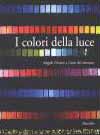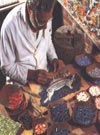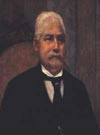| |
I colori della luce : Angelo Orsoni and the art of mosaic
This handsome volume starts with Cristiana Ravenna's history of the Orsoni family and their firm, which was founded by Angelo, great-grandfather of the present owners. Angelo was born on Murano, and worked for the mosaicist Giandomenico Facchina (the inventor of the reverse method), who opened a smalti factory in Venice in 1877, and ceded it to Angelo in 1888. Angelo introduced various improvements, which included coal-firing the furnace, a huge variety of colours, a machine for making smalti slabs of uniform width, accurate replicas of Byzantine tesserae at Ravenna, and a range of golds for San Marco. His panel of over a thousand smalti colours made a great impression at the Paris Universal Exhibition of 1889. The methods he used to make smalti are much the same as those his great-grandsons Ruggero and Lucio Orsoni use to this day. They still have the original recipes.
Marco Verità, who works for the Stazione Sperimentale del Vetro di Murano, contributes a superb chapter on the history and chemistry of glass in general, and smalti in particular. If you want to know the precise chemical reason why visitors to the mosaics in the Orthodox Baptistery, Ravenna, have to be limited in number (see MM9), turn to page 90.
We know that the art of mosaic went into a decline after the mediaeval high water mark, but it still comes as a bit of shock to learn that in the 18th century Venice had to send to Rome for mosaicists, and that by the end of that century, the art of making smalti and gold tesserae had been lost. Happily, the secrets were re-discovered by one Lorenzo Radi in 1840. Not before time: Renato Polacco's chapter on the history of mosaic from San Marco to modern work in Paris and the East reveals that in the early 19th century glazed terracotta tesserae, forsooth, were used in the Last Judgement above the entrance to San Marco. The Orsoni were vital to the work of restoring the mosaics of that great church; for example, they supplied 10,000 kilograms of smalti, no less, between 1924-26. Orsoni golds are to be found in St. Sophia, Constantinople, in the Gaudi cathedral, Barcelona, on the great Buddha at Bangkok, and in Westminster Abbey, to name but a few.
Peter Fischer himself, in "The Past becomes the Present of Mosaic" tells the story of our art from a different angle again. We learn, for instance, not only that the Vatican once produced smalti in 28,000 colours, but that they were made of travertine powder, linseed oil and colouring agents. And writing of Lucio Orsoni, who creates mosaics in the time left over from running the office, Peter maintains that he is one of the four or five finest mosaic artists of our time - a judgement confirmed by the excellent colour photographs of Lucio's work.
The book concludes with a celebratory coda by Isotta Fiorentini Roncuzzi, a list of some mosaics made with Orsoni materials since the founding of the firm, and a technical glossary.
Price: £49 |







